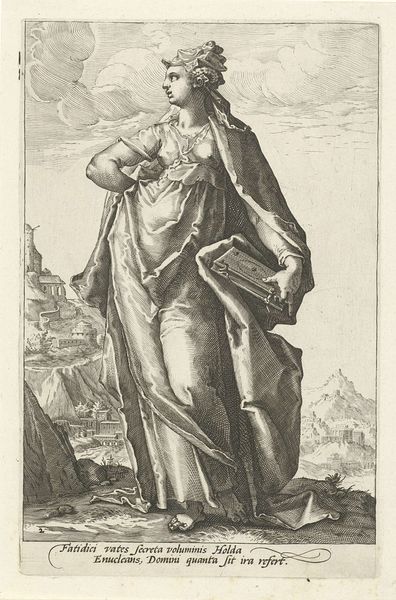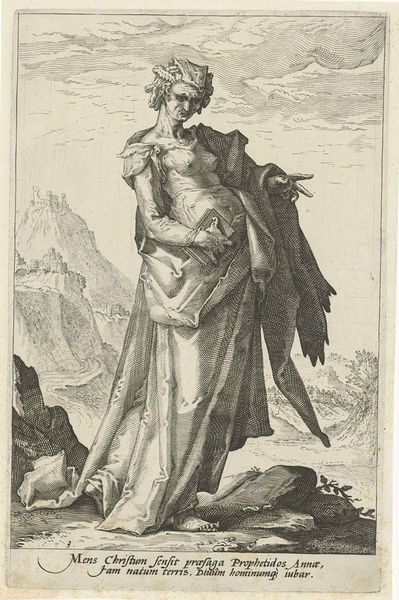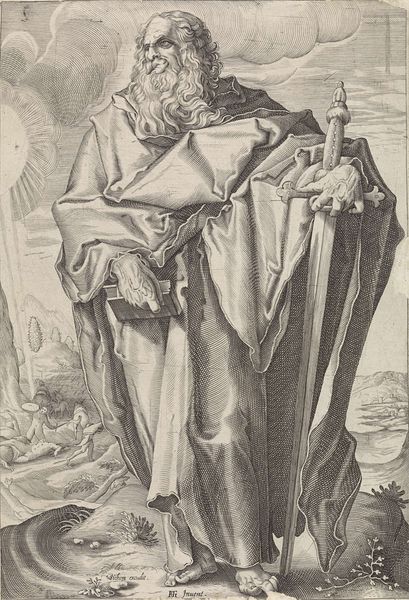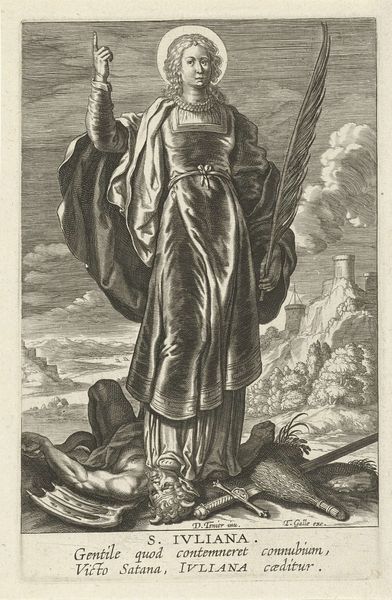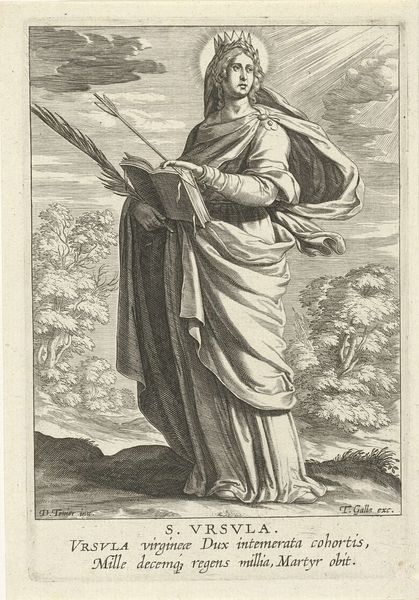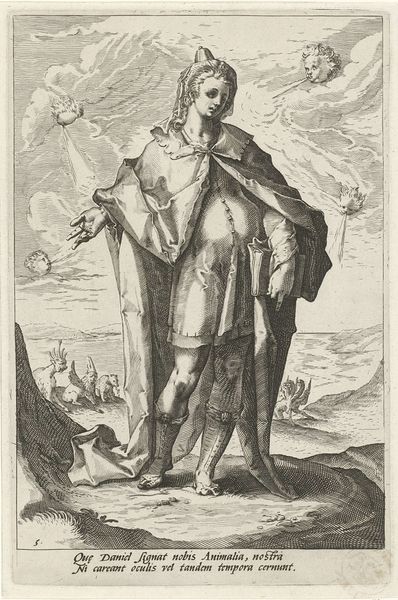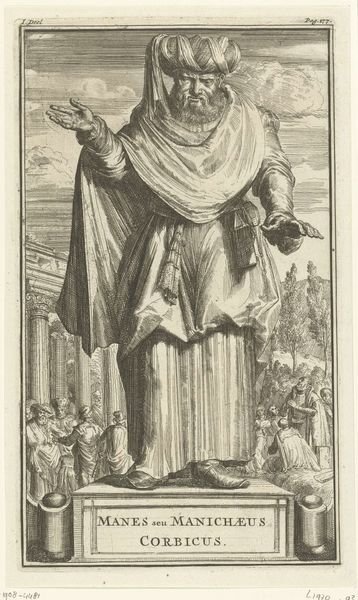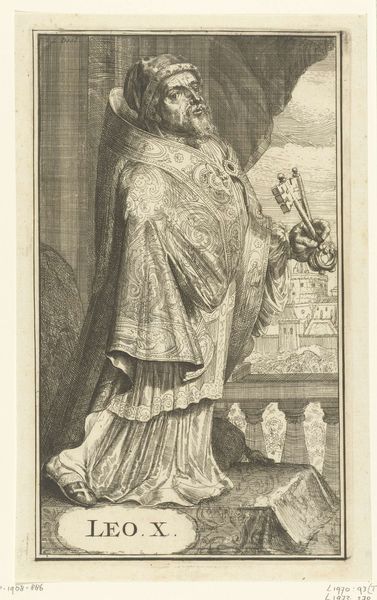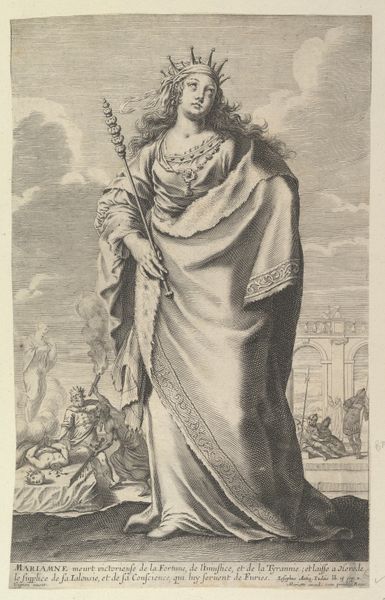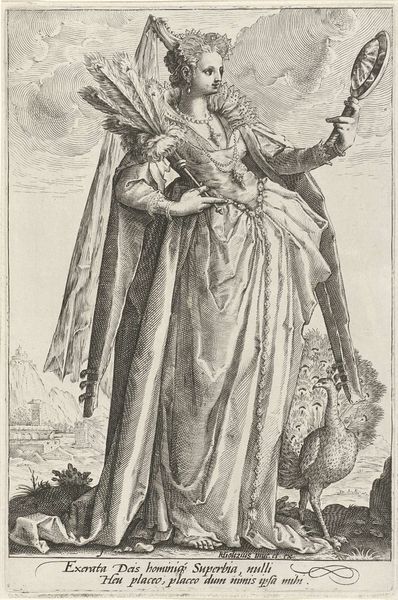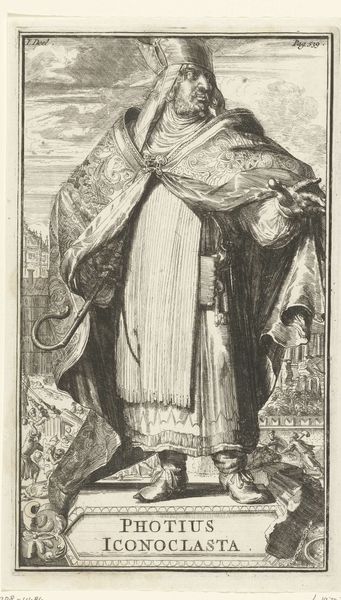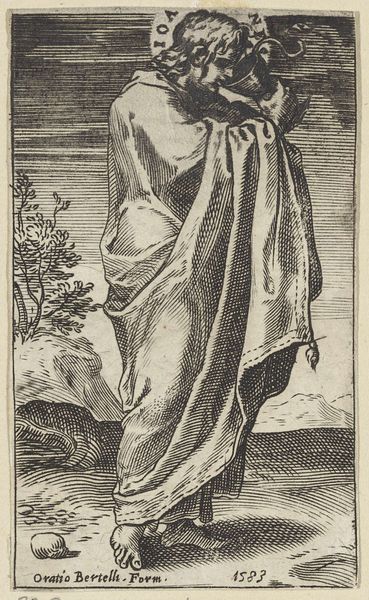
print, engraving
#
portrait
#
baroque
# print
#
figuration
#
history-painting
#
engraving
Dimensions: height 250 mm, width 163 mm
Copyright: Rijks Museum: Open Domain
Editor: This engraving, "David" by Jacob Matham, dating from 1589 to 1777, is a powerful figuration. There's a grandness in David's stance, almost theatrical. What's your read on this piece? Curator: I see this engraving as an artifact embedded in a specific historical and cultural discourse. Consider how prints like this functioned within the religious landscape of the time. Matham’s David is not simply a representation, but an active participant in a visual culture grappling with power, piety, and representation. Note how his clothing looks much more royal than something worn by a shepherd boy. What does this suggest to you? Editor: It gives David an air of authority and legitimacy, I suppose. The crown at his feet also indicates Kingship. Curator: Exactly. Now consider who was viewing such images and where. Prints made religious and historical narratives accessible to a wider audience. But, this accessibility wasn’t neutral. Whose interests were served by portraying David in this particular way? The image becomes less about David himself, and more about how narratives are strategically deployed in specific contexts. The theatrical staging of David, in a posture of religious zeal, seems directly connected to contemporary power dynamics, where control over representation directly related to control of social order. Editor: So, the print serves as a kind of propaganda, solidifying established authority. Curator: In a sense, yes. Art wasn't merely decorative, but also actively participated in the political and social life of the time. Editor: That shifts how I see the piece. I initially focused on David, but the context reveals the artwork as a tool for social construction. Curator: Precisely, and that’s the power of understanding art history through its public role and the politics of imagery.
Comments
No comments
Be the first to comment and join the conversation on the ultimate creative platform.
